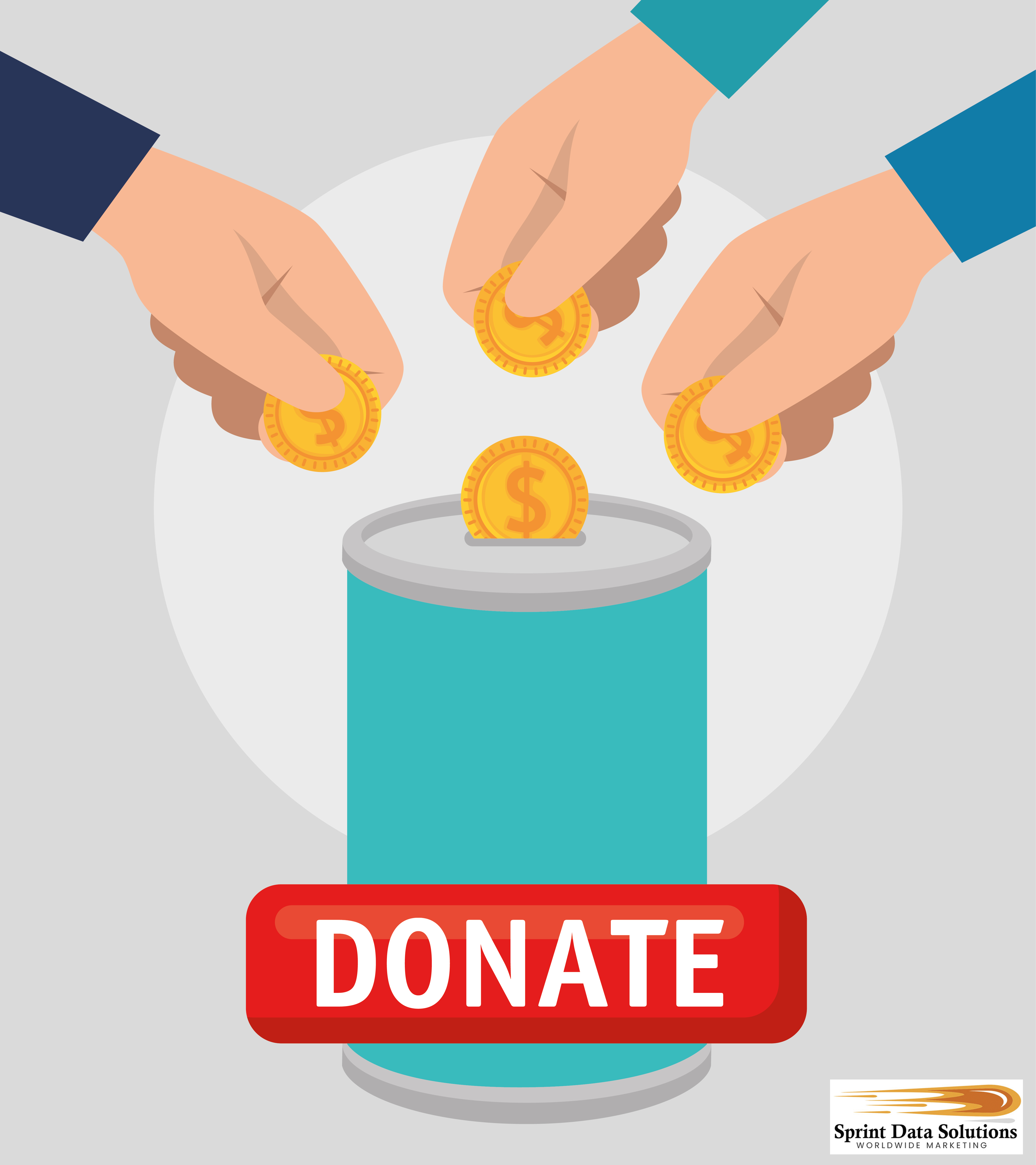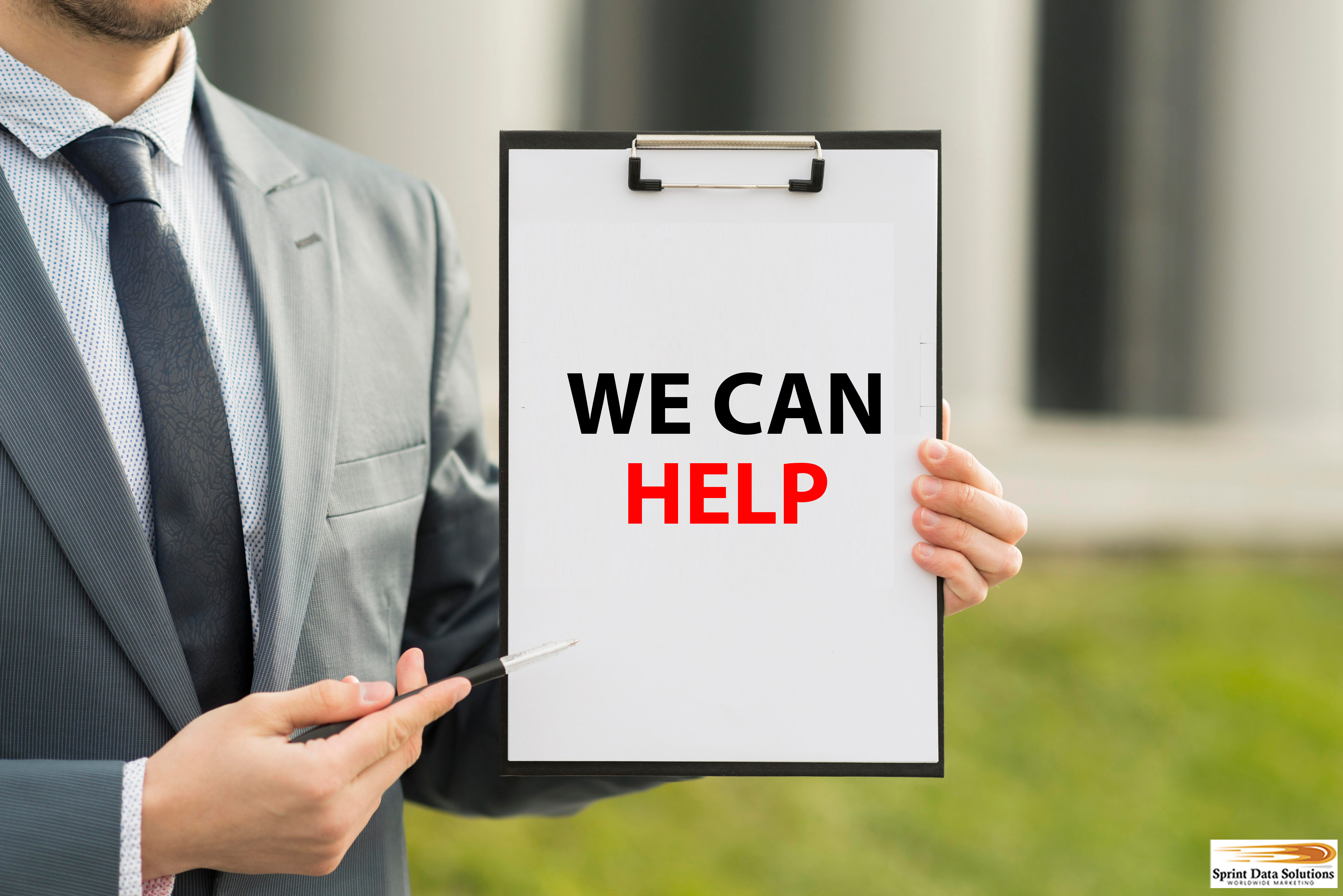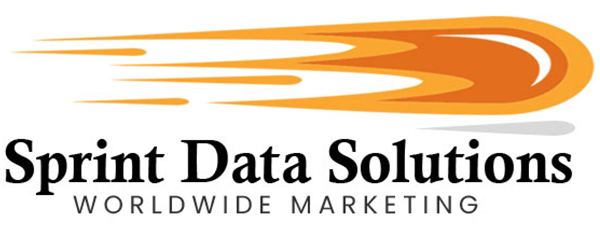The Best Way To Get The Most Donations Is To Find The Right Donors
One of the undeniable realities of the world is that not every organized effort is driven by profitability, nor should it be. Some initiatives exist solely to make a meaningful impact on society rather than generate financial returns. Charitable organizations exemplify this, as they channel resources—whether in the form of money, volunteer work, or logistical support—toward causes aimed at improving lives and addressing critical needs. These efforts span a vast spectrum, from providing shelter and medical care for abandoned animals to ensuring that children in underserved communities gain access to quality education, empowering them with opportunities to build a brighter future. Whether focusing on humanitarian aid, medical research, environmental conservation, or disaster relief, these organizations operate on the foundation of generosity, advocacy, and social responsibility, proving that true success is often measured not in profits, but in the positive change they bring to the world.
The unfortunate reality of today’s world is that, while noble ventures and worthy causes strive to make a difference, they still require financial resources to operate effectively. Unlike traditional businesses that generate revenue through profits, these initiatives rely on external funding to sustain their efforts. Whether it’s charities, non-profits, or humanitarian projects, financial support is essential for covering operational costs, expanding outreach, and making a tangible impact. Without a steady flow of funding, even the most well-intentioned organizations struggle to fulfill their missions. This is where donations play a crucial role, serving as the lifeblood that enables these ventures to continue their work, support their beneficiaries, and drive meaningful change. Whether through individual contributions, corporate sponsorships, or government grants, financial backing is the foundation that keeps these important initiatives alive and thriving.

A Spectrum Of Worthy Causes
Charitable organizations in the United States provide individuals with a diverse array of causes to support, addressing critical needs across all aspects of society. From healthcare and education to environmental conservation and disaster relief, every sector can benefit from financial contributions that help sustain and expand vital programs. Even small donations, when pooled together from a large donor base, can create meaningful impact, while major philanthropic contributions from corporations and high-net-worth individuals drive transformative change. Understanding donor behavior and reaching the right audience is crucial for fundraising success, which is why Sprint Data Solutions Worldwide Marketing offers a meticulously curated database of donors segmented by interests, past giving patterns, and cause alignment. Whether targeting supporters of humanitarian aid, medical research, animal welfare, or local community initiatives, this comprehensive donor list enables charities and nonprofits to connect with engaged contributors most likely to support their mission.
Donor Mailing Lists
For those seeking to identify individuals and businesses that contribute to charitable causes—regardless of the specific mission or industry—there exists a robust and meticulously curated donor database encompassing millions of contributors across all income levels and professional sectors. This expansive resource includes detailed records of both one-time and recurring donors who actively support a wide range of philanthropic initiatives, from social justice and environmental conservation to medical research, education, and religious organizations. Covering every region of the United States, the database provides granular insights that enable precise segmentation based on factors such as geographic location, donation frequency, contribution amount, preferred causes, past engagement history, and key demographic attributes like age, occupation, and household income. Additionally, it highlights corporate sponsors, foundation benefactors, and high-net-worth individuals who consistently fund charitable projects. With these advanced filtering capabilities, organizations can effectively identify and engage donors most likely to align with their mission, fostering stronger connections, enhancing fundraising efforts, and optimizing donor retention strategies for long-term success.
Food Bank Donors
Every American strives for financial stability, ensuring they can provide for themselves and their families, particularly when it comes to putting food on the table. However, life’s unpredictability often disrupts these aspirations. Economic downturns, sudden job losses, medical emergencies, natural disasters, and personal hardships can leave individuals and families struggling to afford daily meals. In such situations, food insecurity becomes a harsh reality, forcing many to rely on food banks, government assistance programs, or community support to meet their nutritional needs. The challenge is not just about access to food but also ensuring that meals are nutritious and sufficient to sustain health and well-being. As economic conditions fluctuate and unforeseen crises arise, addressing food insecurity remains a critical issue that requires both immediate aid and long-term solutions.
Many individuals feel a deep sense of responsibility to support those who struggle with basic necessities, particularly access to food. Whether through monetary contributions or direct donations of non-perishable goods, people are eager to assist those for whom securing the next meal is an ongoing challenge. Food insecurity remains a pressing issue in many communities, affecting families, seniors, and individuals facing financial hardship. To address this need, food banks and community pantries operate in all major urban centers, as well as in many suburban and rural areas, offering essential relief through organized distribution programs. Many of these organizations also provide additional services, such as meal programs, nutritional education, and partnerships with local farmers and grocery stores to maximize their impact. With a wide range of food banks and charitable initiatives available, donors have the flexibility to choose the organization that aligns with their values and preferred method of giving, ensuring their contributions make a tangible difference in the fight against hunger.
Homeless Shelter Donors
Homelessness has become an increasingly urgent issue, particularly in major urban centers where rising living costs, economic instability, and inadequate shelter availability have exacerbated the crisis. Vulnerable individuals face significant risks throughout the year, but the danger intensifies during extreme weather conditions, such as winter, when prolonged exposure to freezing temperatures, wind, and precipitation can lead to severe health complications, including hypothermia, frostbite, and respiratory illnesses. In some cases, lack of adequate protection from the elements can result in life-threatening consequences. Beyond physical health risks, homelessness also takes a toll on mental well-being, with many individuals struggling with anxiety, depression, and trauma due to their living conditions. The situation calls for urgent intervention through expanded emergency shelters, affordable housing initiatives, mental health support, and coordinated community efforts to provide long-term solutions rather than temporary relief.
Homelessness is a complex and widespread issue that affects individuals and families for a variety of reasons, often stemming from a combination of personal, economic, and systemic factors. Many people experience homelessness due to escaping domestic violence or abusive household situations, while others struggle with untreated mental health disorders that make it difficult to maintain stable employment or housing. Economic instability, job loss, medical expenses, or skyrocketing rent costs can also push individuals into homelessness when they are unable to meet the financial demands of maintaining a residence. Additionally, lack of access to affordable housing, inadequate social support systems, and sudden life crises such as divorce or severe illness can contribute to homelessness. This crisis is not limited to any one region—it affects urban, suburban, and rural communities across the United States. In response, shelters and transitional housing programs work to provide temporary relief, support services, and pathways to long-term stability. Many compassionate individuals and organizations contribute to addressing this issue through financial donations, volunteering their time, advocating for policy changes, or participating in initiatives that promote affordable housing and mental health care accessibility.
Animal Abuse Donors
Many Americans have a deep affection for animals and often keep pets, while the majority, even if not avid animal lovers, harbor no ill will toward them. This general goodwill towards animals is why organizations that rescue and care for abused animals receive significant public support. People are often moved by the plight of mistreated animals, leading to generous donations to shelters, rehabilitation centers, and rescue groups. The emotional connection many feel toward animals, coupled with increasing awareness about animal welfare, plays a crucial role in driving these charitable contributions.
For many Americans who cherish their dogs, cats, or other beloved pets, witnessing animal abuse is just as distressing and unacceptable as cases involving children, spouses, or other loved ones. The deep emotional bond between humans and their pets drives strong reactions to such cruelty, prompting many individuals to take action. Whether through financial donations, volunteering at shelters, or advocating for stricter animal protection laws, countless Americans are dedicated to supporting animal welfare. Awareness campaigns, social media activism, and rescue organizations further amplify efforts to combat abuse, ensuring that vulnerable animals receive the care and protection they deserve.

Women’s Shelter Donors
While America strives toward the ideal of equality, the reality remains far from perfect, particularly when it comes to the safety and well-being of women. Statistics on domestic violence continue to highlight a disturbing trend: women are disproportionately affected by abuse, often at the hands of intimate partners. For many survivors, escaping the cycle of violence is a necessary yet incredibly difficult decision. Unfortunately, even after they break free, they frequently encounter a lack of resources, from affordable housing to legal assistance and emotional support. Shelters and crisis centers exist, but they are often underfunded and overcrowded, leaving many victims without a secure place to rebuild their lives. Addressing this issue requires not just temporary solutions but systemic changes, including stronger protections, increased funding for support services, and broader societal awareness to break the cycle of abuse.
Women’s shelters serve as essential resources for those escaping domestic violence, offering not only immediate housing but also comprehensive support services to help survivors rebuild their lives. These shelters provide secure, confidential locations where women can find safety from abusive partners while receiving emotional counseling, legal assistance, and job placement support. Many shelters also offer programs for children, ensuring that families can heal together. By addressing both short-term crises and long-term stability, these shelters empower women to regain control of their lives and break the cycle of abuse permanently.
Emergency Disaster Donors
Natural disasters frequently impact different regions of the United States, causing widespread devastation and displacing countless residents. From the raging wildfires that consume vast stretches of California’s forests to the powerful hurricanes that relentlessly batter Florida’s coastline, these catastrophic events leave communities struggling to recover. Tornadoes in the Midwest, severe winter storms in the Northeast, and flooding in low-lying areas further highlight the country’s vulnerability to nature’s fury. In many cases, people are forced to flee their homes with little more than their lives, facing the daunting challenge of rebuilding in the aftermath.
During times of crisis, people often lose their homes not due to laziness or substance abuse but because an unforeseen natural disaster has completely devastated their lives, leaving them with nothing. These catastrophic events, such as earthquakes, hurricanes, wildfires, or floods, strike without warning and displace large populations simultaneously, overwhelming emergency response systems. The sheer scale of destruction creates immense challenges for relief efforts, as resources, shelters, and aid must be mobilized rapidly to address the urgent needs of countless affected individuals.
During times of crisis, it is natural for Americans who are not directly affected by disasters to feel a strong desire to assist those in need. Many people generously donate money, food, clothing, and other essential supplies to support relief efforts. Others go a step further by volunteering their time and skills to help rebuild communities, provide medical aid, or assist in emergency response operations. Nonprofit organizations, government agencies, and local communities work together to coordinate these efforts, ensuring that aid reaches the victims efficiently. Additionally, advancements in technology and social media have made it easier for people to contribute, whether by crowdfunding, spreading awareness, or organizing local donation drives.
Corporate Donors
Both private individuals and corporations contribute to charitable causes, and just as affluent individuals benefit from tax deductions on donations, businesses can also take advantage of similar financial incentives. In fact, many corporations allocate substantial budgets for philanthropy, corporate social responsibility (CSR) initiatives, and community development programs. Unlike individual donors, corporations often seek partnerships that align with their brand values, sustainability goals, or long-term social impact strategies. This makes them not only a viable but often a more consistent and scalable source of funding compared to individual wealthy donors. Additionally, corporations may offer support beyond monetary donations, such as in-kind contributions, employee volunteer programs, and grant opportunities, further amplifying their impact on charitable causes.
Corporate donations can extend beyond direct financial contributions, offering even greater value through in-kind support that aligns with a company’s expertise. Businesses can leverage their products, services, and logistical capabilities to provide immediate and meaningful assistance. For instance, during a natural disaster, a food and beverage company could not only donate funds but also supply essential food and clean drinking water, ensuring that relief efforts are both swift and effective. Similarly, a technology company might contribute communication tools to aid rescue operations, or a pharmaceutical firm could provide much-needed medical supplies. Such targeted contributions often address urgent needs more efficiently than money alone, maximizing the impact of corporate philanthropy.
Medical Donors
Medical treatment remains a critical area where many Americans struggle to access necessary care due to financial constraints. Some individuals require life-saving treatments but are unable to afford them, putting their health and survival at risk. Others may need essential surgeries—such as procedures that restore mobility, improve organ function, or address chronic pain—but find themselves unable to cover the costs. Additionally, unforeseen emergencies, such as accidents or sudden illnesses, can leave individuals and families facing overwhelming medical bills with no viable way to pay. The high cost of healthcare, combined with gaps in insurance coverage, often forces people to choose between their well-being and financial stability, highlighting the urgent need for more accessible and affordable medical assistance programs.
Many Americans are eager to donate to causes that help people regain their health and improve their lives. The field of medical donations is vast, encompassing a range of options for those who want to make a difference. Some donors choose to support organizations dedicated to researching treatments and potential cures for diseases like cancer, Alzheimer’s, and diabetes. Others prefer to give directly to individuals in need of urgent medical care, such as those requiring life-saving surgeries or expensive medications. Additionally, donations can support hospitals, medical outreach programs, mental health initiatives, and global health efforts, ensuring access to care for underserved communities. With so many areas in need, medical donors have the power to contribute in ways that align with their values and passions, ultimately helping to create a healthier world.
Special Issues Donors
There are also situations where urgent intervention is needed due to specific crises or evolving challenges. For instance, natural disasters like earthquakes or floods often leave people stranded in dangerous conditions, requiring immediate rescue efforts. In some cases, specialized equipment, such as high-powered drills, thermal imaging devices, or even robotic assistance, may be necessary to reach victims safely. Additionally, prolonged operations, such as rescuing miners trapped underground or children stuck in wells, demand continuous logistical support, including food, medical supplies, and financial aid for rescue teams. Public awareness and timely donations play a crucial role in ensuring that emergency responders have the resources they need to act swiftly and effectively.
Certain causes require ongoing financial support due to their persistent nature, such as civil rights movements, which need funding to combat discrimination based on race, gender, religion, or sexual orientation. Similarly, advocacy groups focused on reproductive rights, whether pro-life or pro-choice, continuously seek donations to support legal battles, education, and healthcare access. Gun control and Second Amendment rights organizations also rely on financial backing to influence policy, conduct research, and mobilize supporters. Additionally, funding is crucial for climate change initiatives, mental health awareness, and poverty alleviation efforts, as these challenges require sustained intervention and resources to drive meaningful change.
Veteran Donors
Many Americans deeply respect military veterans who have bravely risked their lives to defend the nation. However, despite their sacrifices, many veterans do not receive the care and support they deserve after their service. The challenges they face upon returning to civilian life can be overwhelming, particularly for those dealing with physical injuries, PTSD, or other psychological trauma. Many struggle to find stable employment, adequate healthcare, or even a sense of belonging in society. While there are programs aimed at assisting veterans, gaps in the system often leave them without the financial, medical, or emotional resources they desperately need. Ensuring proper support for those who have served should be a national priority, yet too many veterans continue to suffer in silence.
This unfortunate reality can sometimes result in the system neglecting those who once put their lives on the line to defend it. However, many compassionate Americans recognize the sacrifices veterans have made and actively contribute to organizations dedicated to providing them with essential resources. These efforts help ensure that former service members receive the medical care, job opportunities, and emotional support necessary to reintegrate into civilian life. By standing together, society can honor their bravery and uphold the very freedoms they fought to protect.
COVID-19 Donors
The emergence of COVID-19 in recent years has triggered an unprecedented global crisis, forcing businesses, governments, and individuals to adapt to a rapidly changing reality. While many non-disabled individuals faced hardships due to economic disruptions, social isolation, and healthcare challenges, the impact has been far more severe for those who contracted the virus. The pandemic has claimed the lives of over a million Americans, leaving behind grieving families and long-term societal consequences. Even more concerning, millions of survivors now suffer from long-term complications, commonly known as Long COVID, which has left many unable to return to their previous levels of health and productivity. These lingering effects include chronic fatigue, respiratory issues, neurological disorders, and other debilitating symptoms, creating a significant public health challenge even as the acute phase of the pandemic has subsided.
“Long COVID” is a serious post-viral condition that can drastically alter a person’s quality of life, with symptoms such as chronic fatigue, persistent breathing difficulties, and cognitive impairments like “brain fog” that hinder concentration and memory. While not always life-threatening, these effects can be debilitating enough to prevent individuals from resuming their jobs or daily routines. Many sufferers experience ongoing organ damage, nervous system dysregulation, or immune system dysfunction, making recovery uncertain and often prolonged. As a result, long COVID has rendered countless individuals unable to contribute to the workforce, forcing them to rely on medical support, financial aid, and social assistance to maintain their livelihood.
Paralysis Donors
Many Americans experience a loss of full mobility that most people take for granted, whether due to congenital conditions, illnesses, or accidents. This impairment can manifest in various ways, including partial paralysis, where certain parts of the body, such as fingers, hands, or legs, lose function to varying degrees. In some cases, individuals may retain limited movement, while others experience a more severe decline in motor control. More significantly, total paralysis can occur, rendering a person unable to move entire sections of their body, such as from the waist down (paraplegia) or even affecting all four limbs (quadriplegia). These mobility challenges often require adaptive technologies, physical therapy, and support systems to help individuals regain independence and improve their quality of life.
Paralysis can have life-altering consequences, with paraplegia affecting mobility from the waist down and requiring the use of a wheelchair, while quadriplegia extends paralysis to all four limbs, often confining individuals to a bed and requiring full-time care. Those living with paralysis face numerous physical, emotional, and financial challenges, including the cost of medical treatments, specialized equipment, home modifications, and personal caregiving services. Unfortunately, many individuals lack sufficient financial resources to cover these expenses, making daily survival a struggle. In severe cases, the inability to afford necessary care can lead to declining health, loss of independence, and even homelessness. Donations and financial assistance programs play a crucial role in ensuring that paralyzed individuals receive the support they need, helping them maintain a dignified quality of life, access essential medical care, and avoid extreme financial hardship.
Special Olympics Donors
The traditional Olympics celebrate the pinnacle of human athleticism, showcasing individuals who push beyond ordinary physical and mental limits to achieve extraordinary feats. Similarly, the Special Olympics highlight the incredible determination of athletes who overcome unique and often more challenging limitations that most people never experience. Beyond just competition, the Special Olympics foster inclusivity, empowerment, and a sense of achievement for individuals with intellectual and physical disabilities. These events not only showcase athletic skill but also inspire society by redefining what is possible through perseverance and dedication.
The Special Olympics is a remarkable event that showcases the resilience and determination of individuals with disabilities, whether in wheelchair basketball, swimming, or other competitive sports. Athletes defy expectations and overcome challenges that many would find insurmountable, proving that determination knows no bounds. However, unlike the regular Olympics, the Special Olympics often receives significantly less media coverage and funding. This disparity highlights the importance of donations and sponsorships to ensure that these incredible athletes get the opportunities they deserve. Across America and beyond, countless individuals support this cause, recognizing that the Special Olympics provides a platform for people with disabilities to shine in ways that everyday life often does not.
Children’s Lunch Program Donors
Children are often regarded as the backbone of a nation’s future, making their education a top priority. However, an often-overlooked factor that plays a crucial role in their academic success is proper nutrition. A hungry child cannot focus on learning, as their mind is preoccupied with the need for food. Unfortunately, many underprivileged families struggle to provide consistent, nutritious meals due to financial constraints. Some parents are forced to choose between paying rent, medical bills, or putting food on the table. Malnutrition not only affects a child’s cognitive development but also weakens their immune system, making them more susceptible to illnesses that can keep them out of school. To truly invest in a country’s future, governments and communities must work together to ensure that every child has access to both quality education and sufficient nutrition, as one cannot be effective without the other.
Children’s lunch programs in schools and community organizations play a crucial role in ensuring that all children, especially those from low-income families, have access to nutritious meals that support their growth, learning, and overall well-being. Proper nutrition is essential for maintaining focus in class, boosting energy levels, and fostering healthy development. However, running such programs requires significant resources, including the cost of purchasing ingredients, meal preparation, and logistical support. Many of these initiatives rely on donations, grants, and community partnerships to sustain and expand their services. Contributions from individuals, businesses, and charitable organizations can help bridge the funding gap, ensuring that no child goes hungry and every student has the opportunity to thrive academically and physically.
Unwed Mother Donors
While the traditional nuclear family remains an ideal for many Americans, the reality is that numerous women face the difficult challenge of raising children alone due to various circumstances. Some women escape abusive relationships to protect themselves and their children, while others may become single mothers due to abandonment, divorce, or even tragic events such as the loss of a partner. In the most heartbreaking cases, sexual violence can result in an unplanned pregnancy, leaving a woman to navigate motherhood under deeply traumatic conditions. Raising a child is already an immense responsibility, requiring emotional, financial, and physical support, and doing so alone—especially after experiencing trauma—can be overwhelming. Despite these hardships, many single mothers display incredible resilience, finding strength in support networks, counseling, and community resources to create a stable and loving environment for their children.
Many compassionate Americans recognize the importance of supporting unwed mothers who strive to provide a stable and nurturing environment for their children. Raising a child alone can be challenging, especially when financial hardships arise. However, with the generosity of those who believe that every child deserves a fair start in life, donations and assistance programs can play a pivotal role in shaping a brighter future. By offering financial aid, educational opportunities, and emotional support, society not only uplifts struggling mothers but also invests in the well-being of future generations, fostering a stronger and more prosperous nation.
Church Donors
Many Americans still practice a religion, but the landscape of faith has grown increasingly diverse. Christianity remains the dominant belief system, yet it spans a broad spectrum, from longstanding traditions like Catholicism and Protestantism to uniquely American-born movements such as Evangelical Christianity, Mormonism, and even newer megachurch and non-denominational trends. Beyond Christianity, other world religions—including Islam, Judaism, Hinduism, and Buddhism—have also gained a stronger presence, reflecting the nation’s growing multiculturalism. Additionally, a rising number of Americans identify as spiritual but not religious, exploring personal faith practices outside traditional institutions.
There are numerous religions worldwide, including Christianity, Judaism, Islam, Hinduism, and Buddhism, each with unique traditions and beliefs. As nonprofit entities, religious organizations often rely on donations to support their operations, community services, and charitable initiatives. These contributions fund activities such as food distribution, disaster relief, education, and healthcare for those in need. Many individuals prefer to donate to their own faith-based organizations, but interfaith charities also play a significant role in bridging communities and supporting diverse causes. Encouraging donations to religious institutions aligned with one’s values ensures that these organizations can continue their mission of service and spiritual guidance.

How We Can Help
Sprint Data Solutions Worldwide Marketing offers comprehensive access to multiple marketing channels. Their extensive database includes verified mailing addresses, landline and business phone numbers, and targeted email contacts, ensuring precise outreach. Additionally, they provide cellular phone numbers for SMS and text-based marketing campaigns, allowing businesses to engage potential customers through personalized mobile communication. With a focus on accuracy and segmentation, Sprint Data Solutions helps businesses optimize their marketing efforts across various industries, enhancing reach and conversion rates effectively.
The contact database is structured to accommodate various geographic and demographic needs, allowing businesses to tailor their outreach with precision. From a national reach to regional, state, and even hyper-local neighborhood levels, marketers can define the exact scope of their campaigns. Additionally, detailed demographic segmentation is available, enabling filtering by factors such as gender, age, ethnicity, income level, and religious affiliation. Moreover, clients can refine their target audience based on behavioral insights, including purchasing habits, charitable donation preferences (such as support for child welfare, animal rescue, or medical research), and even political or social engagement. This level of customization ensures that outreach efforts are not only wide-reaching but also highly relevant and effective.
No matter your mission, Sprint Data Solutions Worldwide Marketing provides the high-quality donor lists you need to reach the right audience. Our comprehensive data ensures you connect with engaged supporters, maximizing your outreach efforts. Contact us today to explore our tailored solutions and boost your campaign’s success!






